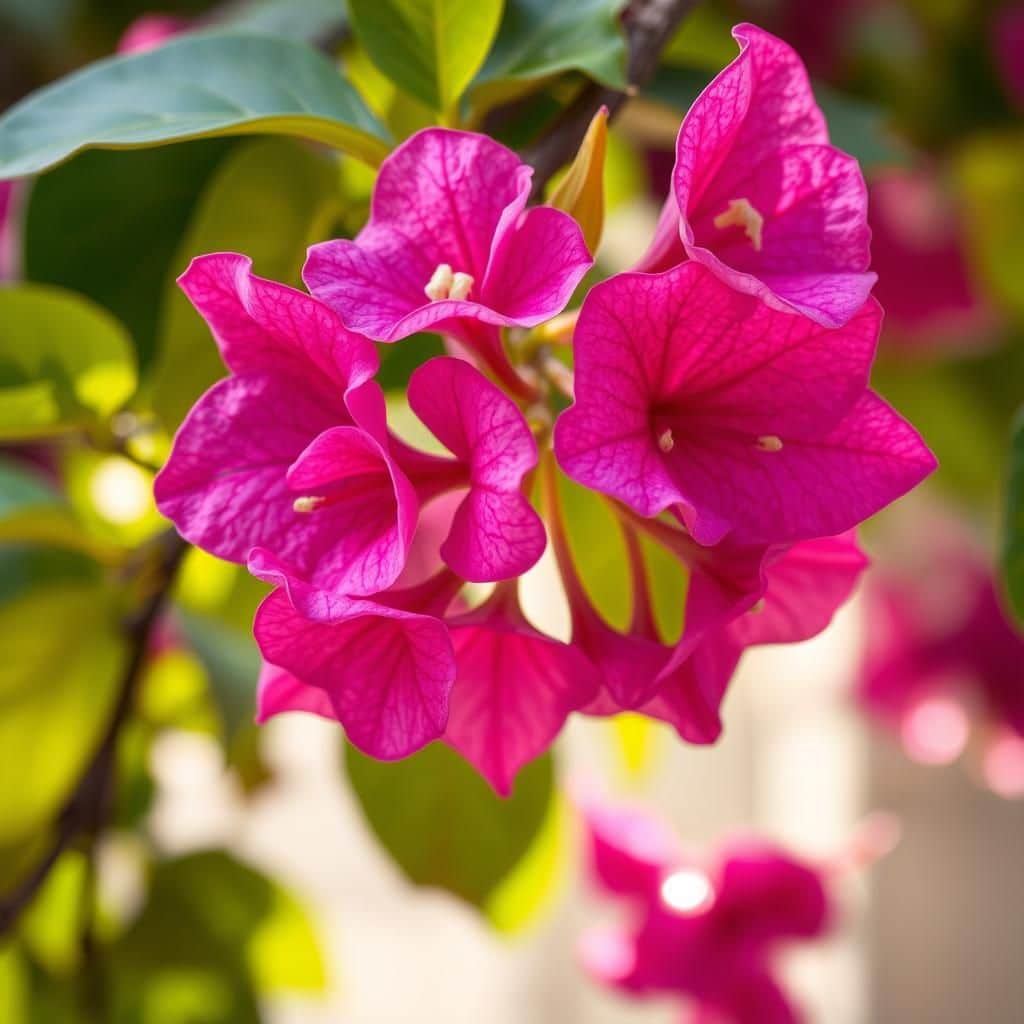Understanding the Risks: How Poisonous is Bougainvillea?

Bougainvillea, with its vibrant colors and sprawling beauty, has become a popular choice in gardens and landscapes around the world. However, many people are unaware of the potential risks associated with this alluring plant. While it is not classified as a highly poisonous species, there are concerns regarding its sap and thorns, which can cause irritation and allergic reactions in some individuals. In this article, we will explore the various aspects of bougainvillea's toxicity, its effects on humans and pets, and essential precautions to take when handling this stunning yet potentially harmful plant. Understanding these risks is crucial for safe cultivation and enjoyment.
Understanding the Toxicity of Bougainvillea
Bougainvillea is often considered a non-toxic plant for most humans and pets, but it does contain thorns and can cause some irritation if ingested. The bracts, which are the colorful leaf-like structures, are not toxic; however, the sap may provoke mild allergic reactions. Although severe poisoning is rare, it is always advisable to keep plants like Bougainvillea out of reach of young children and pets to avoid any potential issues. Any ingestion of plant material should be monitored, and a medical professional should be consulted if any symptoms occur.
The Components of Bougainvillea
Bougainvillea consists mainly of bracts and thorns, which serve as its defense mechanism against herbivores. The bracts are brightly colored and attract pollinators, but they do not possess any toxic properties. The plant is primarily composed of fibrous material and water, contributing to its resilience in various environments. Care should be taken, however, as the thorns can cause physical injuries if handled carelessly.
Symptoms of Mild Irritation
When ingested, Bougainvillea can lead to mild symptoms such as nausea, vomiting, or diarrhea. These symptoms typically arise from irritation in the gastrointestinal tract rather than from any toxic compound in the plant. Most cases are manageable and resolve with basic home care, but it is important to keep track of the individual's reaction, especially if they encounter allergies or other peculiar symptoms following exposure.
Safe Handling Practices
To minimize any risks associated with Bougainvillea, it is advisable to practice safe handling methods. Wearing gloves while pruning or handling the plant can protect against the thorns. Additionally, maintaining a clean area around the plant can help reduce the risk of injury from fallen thorns and other debris. Always ensure that children and pets are supervised when around this ornamental plant to prevent accidental ingestion.
See also:
Possible Allergic Reactions
Some individuals may experience allergic reactions when coming into contact with Bougainvillea, primarily due to its sap. Symptoms can include skin irritations, rashes, or respiratory distress in sensitive individuals. It is recommended to wash any affected areas promptly and seek medical advice if symptoms persist or worsen. Those prone to allergies should exercise caution when interacting with this plant.
Comparison with Other Decorative Plants
In comparison to many other decorative plants, Bougainvillea is relatively safe regarding toxicity. Many commonly grown plants, such as oleander and azaleas, contain highly toxic compounds that pose serious risks to both humans and pets. Bougainvillea's mainly non-toxic nature makes it a favored choice for home gardens; however, the potential for physical injury due to thorns remains a consideration when choosing to cultivate this vibrant plant.
| Plant | Toxicity Level | Common Symptoms |
|---|---|---|
| Bougainvillea | Non-toxic | Mild nausea, irritation |
| Oleander | Highly toxic | Heart irregularities, death |
| Azalea | Highly toxic | Vomiting, diarrhea, lethargy |
| Spider Plant | Non-toxic | No significant symptoms |
| Pothos | Moderately toxic | Oral irritation, swelling |
Evaluating the Toxicity of Bougainvillea: Myths and Facts
Bougainvillea is often misunderstood when it comes to its toxicity levels. While the plant is noted for its vibrant colors and ornamental value, many wonder about its safety, especially around children and pets. The sap and other parts of the Bougainvillea contain compounds that can lead to mild irritation or allergic reactions, but it is generally regarded as non-toxic if ingested in small amounts. It's essential to recognize that while it may cause symptoms like nausea or vomiting, it is not highly poisonous compared to other common garden plants. Therefore, understanding the real risks associated with Bougainvillea is crucial for safe gardening practices.
Common Symptoms of Bougainvillea Ingestion
Ingesting parts of the Bougainvillea can lead to various symptoms, predominantly including nausea, vomiting, and diarrhea. These reactions are generally mild and vary depending on the individual’s sensitivity. While the reaction is usually not severe, it is important to monitor anyone who has ingested the plant, particularly children and pets, as they may experience more pronounced symptoms due to their smaller body size.
Identifying Poisonous Parts of Bougainvillea
Most parts of the Bougainvillea are relatively safe, but the leaves and thorns may pose a risk. The thorns can cause physical injuries, while the sap can lead to skin irritation for some individuals. It is advisable to wear gloves when handling the plant to avoid potential reactions, particularly if you have sensitive skin or allergies.
See also:
Preventing Accidental Poisoning with Bougainvillea
To prevent accidental poisoning, it's essential to educate those who are around Bougainvillea, especially children and pets, about the dangers associated with ingesting the plant. Supervision is vital while they are in the vicinity of the plant. Consider using fencing or other barriers to keep pets at a safe distance and teach children to avoid putting any garden plant in their mouths.
Safe Practices for Gardening with Bougainvillea
When gardening with Bougainvillea, adhere to safety practices to minimize risk. Always wear protective clothing, including gloves and long sleeves, while handling the plant to avoid thorn injuries and skin contact with the sap. Additionally, it’s crucial to maintain a clean workspace to prevent accidental ingestion of fallen leaves or flowers, especially in areas frequented by children or pets.
Consulting Poison Control in Case of Exposure
If someone has been exposed to Bougainvillea and experiences unusual symptoms, it’s important to consult poison control or a healthcare professional for guidance. They can provide specific advice depending on the severity of the symptoms and the amount of the plant that may have been ingested. Having information on the plant’s characteristics handy can assist healthcare providers in offering appropriate care.
Questions from Our Readers
How poisonous is Bougainvillea to humans?
Bougainvillea is considered non-toxic to humans. While ingestion of the plant may cause mild gastrointestinal discomfort, it is not known to be harmful or life-threatening. Therefore, accidents involving Bougainvillea are usually not serious, but it's still advisable to keep the plant out of reach of small children.
Can Bougainvillea be harmful to pets?
Bougainvillea is also deemed non-toxic to pets, such as dogs and cats. However, if a large quantity is consumed, it may lead to mild digestive upset, such as vomiting or diarrhea. Generally, pets are unlikely to consume it in significant amounts, but it's good practice to monitor their behavior around the plant.
See also:
What symptoms should I watch for if someone ingests Bougainvillea?
If someone ingests Bougainvillea, the most common symptoms include nausea, vomiting, or diarrhea. These symptoms are usually mild and resolve on their own. However, if severe symptoms arise or persist, it is important to seek medical attention for further evaluation.
Is there any part of Bougainvillea that is particularly harmful?
While all parts of Bougainvillea can cause some mild irritation, the thorns are the most hazardous aspect of the plant. They can cause painful injuries if handled improperly, but there are no significant toxic effects associated with the plant itself. Always exercise caution when handling Bougainvillea to avoid potential injuries from its thorns.

If you want to read more articles like Understanding the Risks: How Poisonous is Bougainvillea?, we recommend you check out our Landscaping category.
Leave a Reply
Related Articles